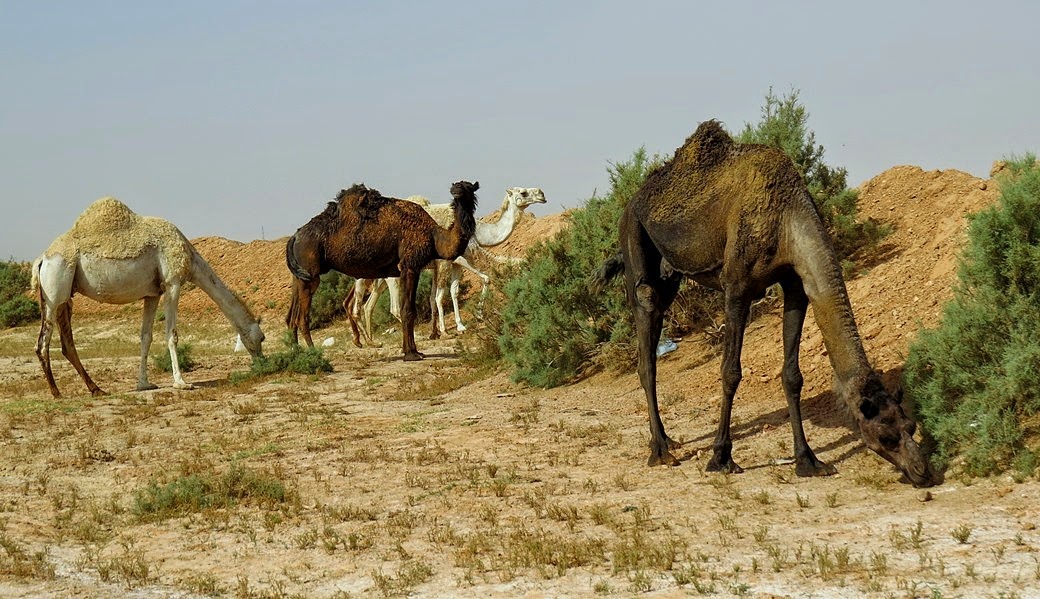I was lucky that partial cloud kept the temperatures below 40C at the time of finishing.
The wetland is roughly rectangular. As always I started at the south west corner and walked the west side followed by the north side and then east and so on.
This blog is about the west and north sides visited before about 9 am.
I didn't have high expectations as I suspected the passage would be mostly over.
Namaqua dove
All four resident doves were easily seen though the density is quite low here: feral pigeon, laughing dove, collared dove and Namaqua dove.
Kentish plover
On the west side, the resident Kentish plover were flocking and not seemingly defending any ground. No distraction rituals were seen unlike previous visits. I presume their breeding season is over.
Terek sandpiper with Kentish plover
However close inspection of the birds while wading showed a single Terek sandpiper with them. This was one of the signs that some late passage was still taking place.
Terek sandpiper
The Terek sandpiper was only loosely associating with the Kentish plover and when they left it stayed behind.
crested lark
Once again I saw desert lark on the walk from the car to the wetland with several crested lark observed all morning on all sides of the wetland. I also saw a hoopoe lark which I believe is a new bird for me at this site. Minutes late I spotted a hoopoe.
Black winged stilt
Black winged stilt were more in evidence than on any previous visit. I can surmise they have breed in the inaccessible centre of the wetland and are now dispersing. This seems more likely than having a late influx of passage birds.
graceful prinia
Several warblers were seen especially on the west side. These were not all the resident graceful prinia though they were the most common.
There was a lot of noise from European reed warbler which are almost certainly breeding here.Two were glimpsed. There are still great reed warbler present and a sedge warbler was also seen. The former could also be a breeder. It would not be the first time in central Arabia.
willow warbler
Four or five willow warbler were present. Like the Terek sandpiper these are late passage birds.
little grebe
The north side of the wetland is arguably the best for birding. On the edge, it has more low lying reeds and some grass-based marsh land with some small streams too. There is also some deep water areas a little further into the wetland where little grebe were once again seen. There were some young birds among them.
One problem with the north side is that to see most birding action, I have to face south and that means into direct sunlight.
moorhen on the north side
This time there was an additional problem. A herd of camels was parked right in the middle of the area. It stayed for a long time. Furthermore the herder's need for water was greater than mine so I gave him my last water on his request. This made things challenging for the rest of the morning as the temperatures rose.
one of two herds of camel
I did get to see little bittern on three occasions. Each time a bird flushed well before I would have seen it. I have seen them in this area on every visit to the wetland over the past three months.
Another notable sighting was of two wood sandpiper. These are more signs of some lingering late passage.
In the next blog, I'll write about the walk round the east and south sides.












No comments:
Post a Comment